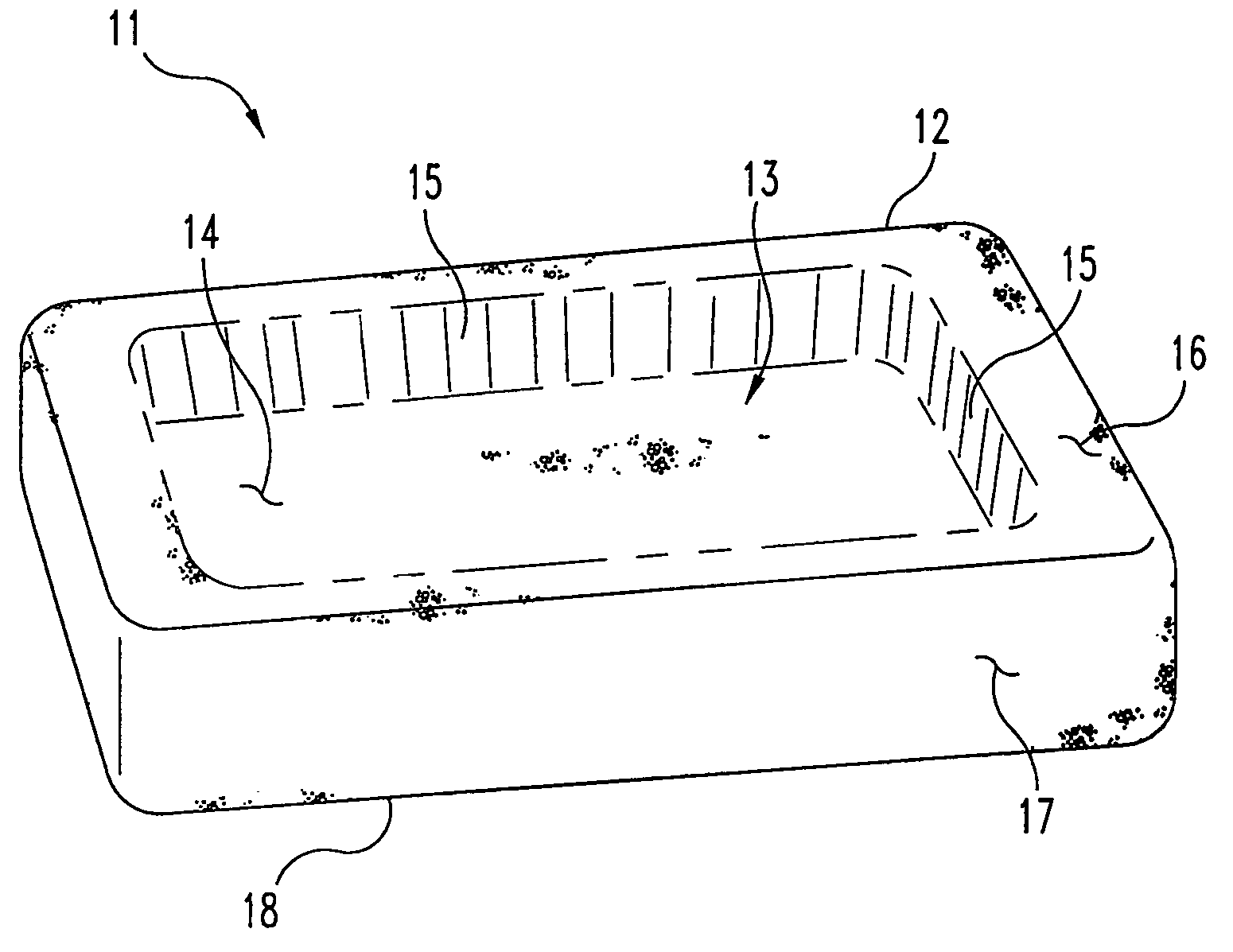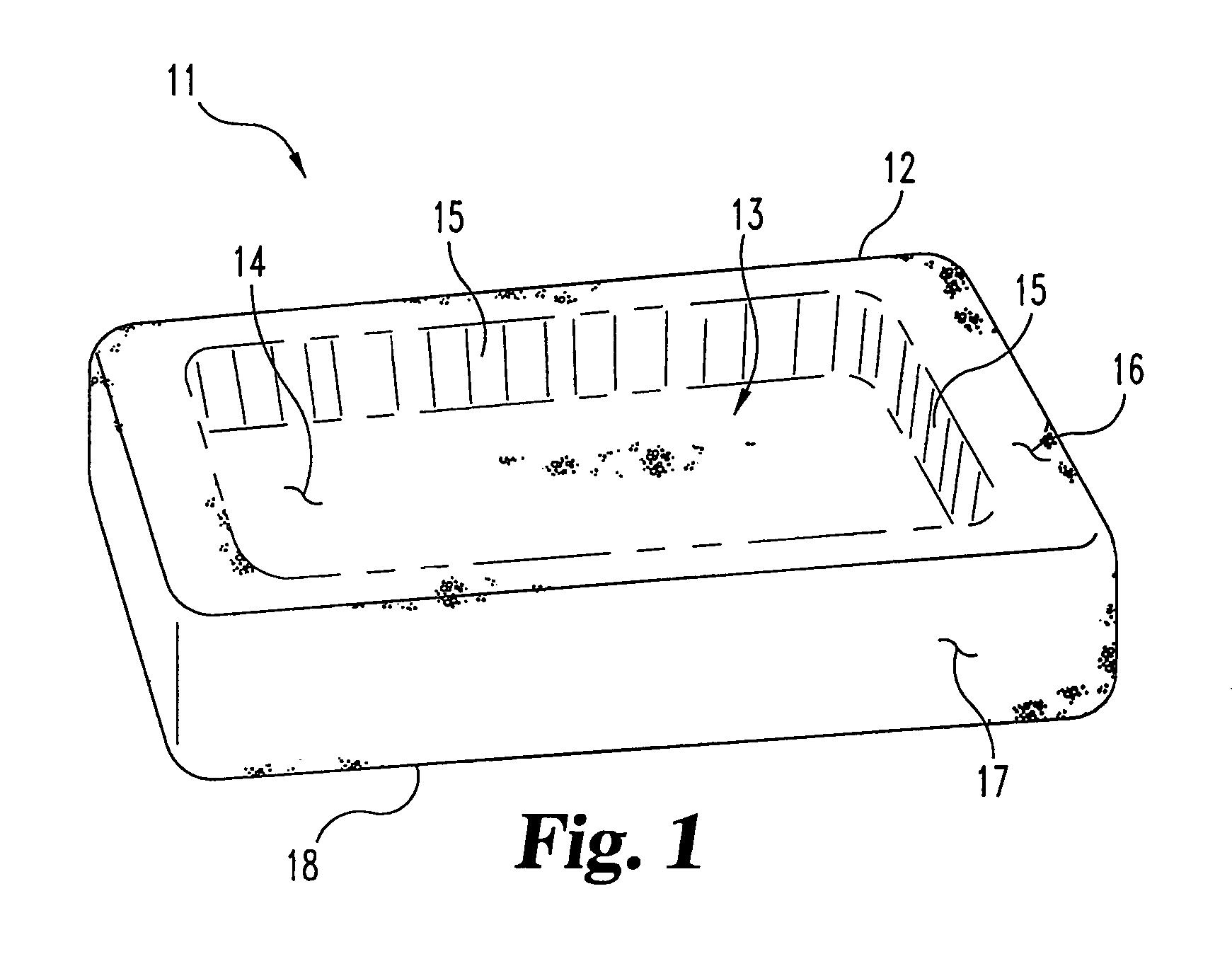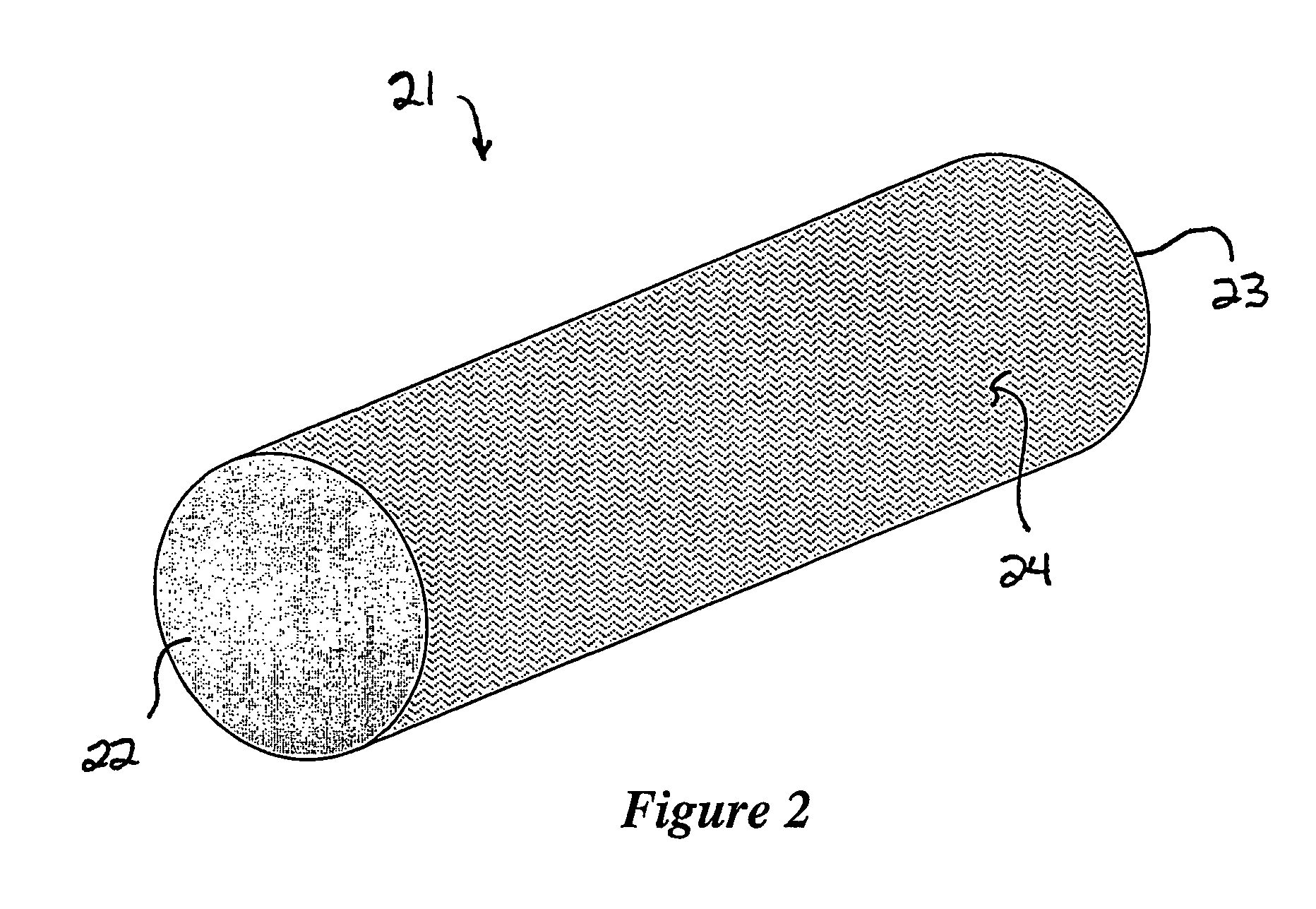Cohesive osteogenic putty and materials therefor
a technology of osteogenic putty and cohesion, which is applied in the direction of osteogenic factor, prosthesis, peptide/protein ingredients, etc., can solve the problems of lack of cohesion, brittle substances, and incorporation of substantial amounts of mineral particles into putty materials, and achieve the desired cohesion
- Summary
- Abstract
- Description
- Claims
- Application Information
AI Technical Summary
Benefits of technology
Problems solved by technology
Method used
Image
Examples
example 1
Preparation of Inventive Putty with rhBMP-2
[0052]9 ml of a buffered aqueous solution of rhBMP-2 (1.5 mg / ml solution, as available with INFUSE® Bone Graft, Medtronic Sofamor Danek, Memphis, Tenn.) were added to a dried, porous cylindrical body having a volume of 18 cc and weighing approximately 3.8 grams. The dried, porous body had been prepared by casting and then lyophilizing an aqueous suspension of insoluble collagen fibers, acid soluble collagen, and ceramic granules, exhibited a porosity of about 85%, and was comprised of the following:
[0053]
MaterialWt % SolidsBiphasic CaP Granules*80%Insoluble Collagen Fibers14%Acid Soluble Collagen6%*Mastergraft ® Ceramic Granules, biphasic calcium phosphate granules containing 85% tricalcium phosphate and 15% hydroxyapatite, particles size 0.5-1.6 mm,
[0054]Mastergraft® Ceramic Granules, biphasic calcium phosphate granules containing 85% tricalcium phosphate and 15% hydroxyapatite, particle size 0.5-1.6 mm,
[0055]After soaking, the implant mat...
example 2
Use of Inventive Putty in Interbody Spinal Fusions
[0056]An ovine interbody fusion model was used to compare the ability of a 5 mm×11 mm×11 mm polyetheretherketone spinal spacer (VERTE-STACK® CORNERSTONE® PSR PEEK Implant, Medtronic Sofamor Danek, Memphis, Tenn.) with packed-in Autograft and the PEEK spacer with packed-in Inventive Putty of Example 1 (IP+rhBMP-2) to effect interbody fusion at 6 months post-operatively. The efficacy of these treatments to induce interbody fusion in the ovine lumbar fusion model using blinded radiographic, biomechanical, and histologic measures was evaluated. Assessment of fusion was made with Faxitron high-resolution radiography, non-destructive biomechanical testing, and undecalcified histology with corresponding microradiography. All analyses were conducted in a blinded fashion. In addition, undecalcified histology was used to evaluate the osteocompatibility of the Inventive Putty. In addition to the treatment groups being evaluated, normal spines w...
example 3
Use of Inventive Putty in Posterolateral Fusions
[0096]An instrumented ovine posterolateral fusion model was used to evaluate the ability of Autograft and the Inventive Putty of Example 1+rhBMP-2 (IP+rhBMP-2) to effect posterolateral fusion at 6 months post-operatively. The efficacy of these treatments to induce posterolateral fusion in the ovine lumbar fusion model was evaluated using blinded radiographic, biomechanical, and histologic measures. Assessment of fusion was made with Faxitron high-resolution radiography, non-destructive biomechanical testing, and undecalcified histology with microradiography. All analyses were conducted in a blinded fashion. In addition, undecalcified histology was used to evaluate the osteocompatibility of the bone graft substitutes. In addition to the treatment groups being evaluated, biomechanical properties of normal spines were evaluated using the same methodology. When all data acquisition was complete, the key was broken, and radiographic, biomec...
PUM
| Property | Measurement | Unit |
|---|---|---|
| particle diameter | aaaaa | aaaaa |
| particle diameter | aaaaa | aaaaa |
| particle diameter | aaaaa | aaaaa |
Abstract
Description
Claims
Application Information
 Login to View More
Login to View More - R&D
- Intellectual Property
- Life Sciences
- Materials
- Tech Scout
- Unparalleled Data Quality
- Higher Quality Content
- 60% Fewer Hallucinations
Browse by: Latest US Patents, China's latest patents, Technical Efficacy Thesaurus, Application Domain, Technology Topic, Popular Technical Reports.
© 2025 PatSnap. All rights reserved.Legal|Privacy policy|Modern Slavery Act Transparency Statement|Sitemap|About US| Contact US: help@patsnap.com



